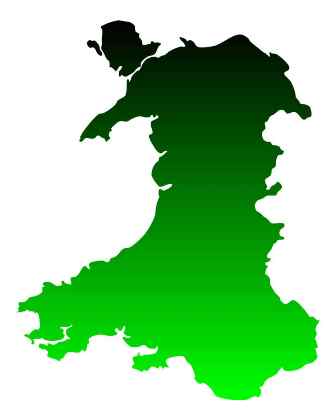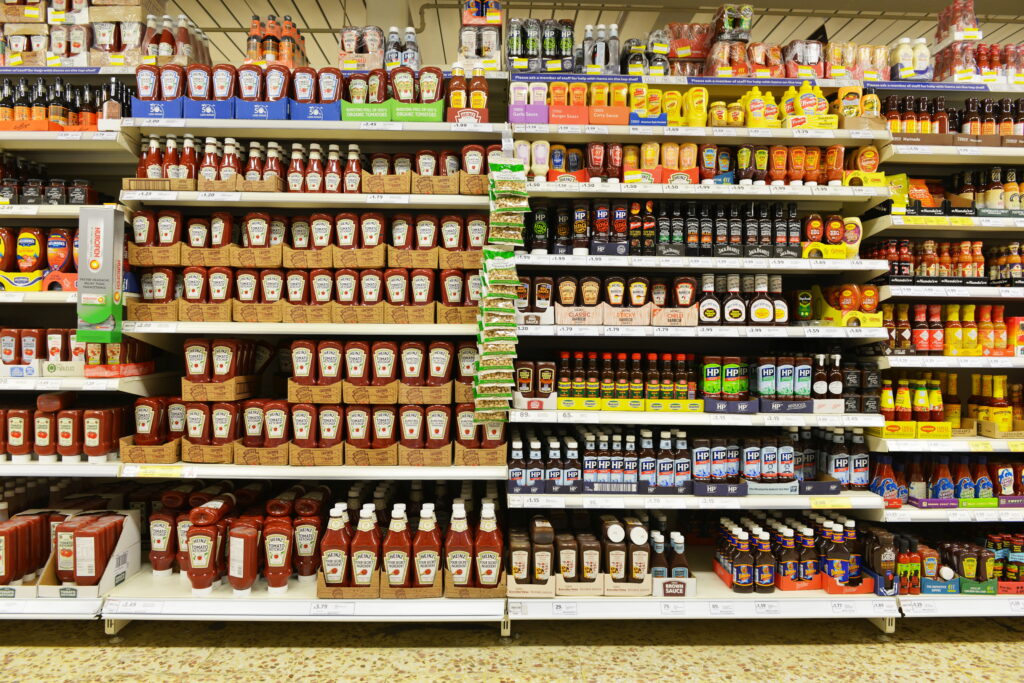
Wales’ recycling performance continues to rise as the latest figures reveal the country now recycles, reuses or composts 64% – an increase from the previous year’s rate of 60%[1]. As a result it is likely that Wales will achieve its recycling target of 70% prior to its target date of 2025, as set out in the national waste strategy ‘Towards Zero Waste’.
Recycling targets will be one of the issues the Welsh government will consult on next year when the waste strategy is reviewed to ensure it complements the aims set out in the Well-being of Future Generations Act (Wales) 2015 and the Environment (Wales) Act 2016[2]. Already it has been announced that they are considering an 80% recycling target by 2035 among a number of other measures to further increase resource efficiency within the country in its ambitions for ‘Wales to become the best recycling nation in the world[3]’. One of the measures being considered is the establishment of a carbon metric to accompany the present weight based recycling targets. Previously Welsh Government had discounted alternatives to weigh based targets because of their practical difficulties or disadvantages.

Carbon Metric
Ricardo Energy & Environment is a strong advocate of using science and evidence to underpin policies and targets. In the realm of environmental impacts, this means life cycle assessment (LCA). LCA is an established method for assessing the environmental (and sometimes social) impacts of a product, service, business, policy or process. Covering multiple environmental indicators and looking from cradle to grave, a full LCA helps avoid adopting initially attractive changes that simply shift burdens to other life cycle stages or to other impact categories.
In the world of UK waste management, life cycle thinking has been strongly influenced by the Waste and Resources Assessment Tool for the Environment (WRATE) a LCA tool developed for the Environment Agency. Originally designed to help municipal waste managers optimise their waste collection and treatment methods, the tool is founded on a fundamental baseline assumption that the waste arises “for free”, with no environmental impact. At the time, this was a perfectly reasonable assumption, and allowed users to assess the relative merits of different waste management options for their waste arisings.
LCA thinking
When WRAP and, in particular, Zero Waste Scotland wanted to move beyond simple weight-based calculations in assessing the environmental impacts of waste management, the decision was made to use a streamlined LCA approach with one environmental criterion, “carbon”, as the new metric. Carbon here equates to the LCA category “global warming potential” (GWP), usually over a 100-year period, expressed in units of carbon dioxide equivalents (CO2 eq). In developing its Carbon Metric[4], ZWS used LCA thinking to estimate the net GWP impact of the different possible fates (closed or open loop recycling, composting, digestion, incineration or landfill) for different waste fractions (glass, food, tins, plastics, etc).
Using this accounting principal, Ricardo has previously published a “local authority carbon league table”[5] . This combined published data from each authority on waste tonnages and fates with the corresponding carbon factors to calculate an average emission factor (AEF) for each authority, in units of kg CO2 eq per tonne of waste handled. The range of results was instructive in itself, ranging from -348kg/t for the best authority (the negative number indicating a net decrease in GWP) to +333kg/t for the worst[6]. In publishing the results, we thought there was much that local authorities could learn from the data. What were the “big swing” contributions that were influencing their results? How did their performance compare to similar or neighbouring authorities? We used the data to help some authorities prioritise investments, comparing (for example) initiating HWRC carpet recycling with introducing garden waste collections, to determine which delivered the better environmental performance per pound spent.
Unintended consequences

The present weight based targets have encouraged councils to chase the heaviest wastes – notably glass – alternatively carbon targets will focus attention on where the biggest carbon gains can be made. Plastics are consequently likely to rocket up the target list, as recycling plastics delivers an excellent carbon return per tonne of waste diverted. Happily, encouraging local authorities to collect and recycle more plastic does not feel like a bad outcome at all. On a carbon basis, textiles are even more attractive than plastics, but this is where things begin to get tricky. Faced with a challenging carbon target, a local authority might very reasonably decide to chase textile recycling as an effective means of improving its performance. However, rather than delivering a sizable improvement in the environmental management of wastes, this action will most likely simply divert textiles from existing third-sector reuse channels (a process termed “cannibalisation”). By this means, increased council investment and collection efforts will lead to only marginal additional waste diversion, and the possible demise of some local charities that rely in part on their income from textile recycling.
An issue with the carbon target as conceived above is its normalisation to a “per tonne of waste handled” basis. This was employed for a number of reasons, most notably to enable comparison of authorities of different sizes. The problem is that, for as long as the target is normalised, it presents no incentive to reduce waste arisings. The same issue exists with current weight-based targets. In its 2012 report, Public Participation in Waste Recycling, Wales Audit Office argued that the Welsh Government will not reach its target of a 75% reduction in the ecological footprint of waste by 2050 if Wales does not significantly reduce waste production as well as increase recycling rates[7]. Ecological footprinting is a key indicator for sustainable development in Wales, another measurement about which, according to Nia Seaton, caution should be taken ‘as it does not take into account social and economic issues associated with sustainable development[8]’. Fortunately, as well as recycling at 64%, the tonnage of municipal waste generated has fallen by 6%.
Waste reduction
Returning to the issue of incentivising waste reduction there appear to be two approaches. The simplest solution is to introduce a second target that is explicitly about waste reduction. The natural tendency is probably to make this a weight-based target, though we note again that that will drive authorities to chase the heaviest wastes first. The alternative solution is to embed in the factors a carbon cost for the production of the material in the first place. This quickly gets complicated (a tonne of food waste can have widely different embedded carbon levels – e.g. lettuce versus beef) but could perhaps be done at a high level to give an adequate approximation. The information would be used to set a baseline (perhaps indexed to population) against which the council could then measure all its waste management efforts, including prevention.
Finally, and perhaps the most fundamental from an LCA standpoint, carbon metrics use GWP as a proxy for all environmental impacts. This is an understandable but troublesome approximation. If we want the best washing detergent for the environment, we should focus not on its carbon footprint but its eutrophication potential, because this is the most significant impact of these detergents.
Overall we believe that local authority carbon targets are better than weight-based targets, but it should be highlighted that setting targets for any activity can result in perverse outcomes. Consider the imposition of the target for hospital A&E patients to be seen within four hours of arrival which resulted in;
- 124% increase in short (< two days) hospital stays
- 24% percent of admissions occurred between 3h50 and 4h00 of arrival
More importantly we believe that resource security and depletion should become a central consideration in the development of any revised waste strategy in Wales, or the whole of the UK for that matter. As a result of this type of policy approach, the recovery and reuse of waste electrical and electronic equipment will quickly become critical, despite its relatively modest carbon impacts. If resource depletion is not explicitly considered as part of the revised waste strategy in Wales, we must at least ensure that our targets which will ensure we are the best recycling nation in the world do not encourage us to act in a way that depletes critical materials.
We therefore need to be mindful that setting targets carbon or weight based does not detract from the Welsh Governments overall objective of a sustainable Wales which is not only looking out for our future generation, but our planet’s resources.
[1] http://gov.wales/newsroom/environmentandcountryside/2017/170824-wales-has-bin-recycling-even-more/?lang=en
[2] http://gov.wales/topics/environmentcountryside/epq/waste_recycling/zerowaste/?lang=en
[3] Former Environment Minister Carl Sergeant http://resource.co/article/wales-eyes-80-cent-recycling-target-councils-11743
[4] http://www.zerowastescotland.org.uk/our-work/carbon-metric
[5] Local authority carbon league table, Ricardo Energy & Environment website https://ee.ricardo.com/waste/case-studies/carbon-league-table
[6] the Welsh LA results range was from -269 to +49
[7] http://www.audit.wales//publication/public-participation-waste-recycling
[8] Nia Seaton, ‘Making our footprint sustainable
http://www.assembly.wales/NAfW%20Documents/ki-026.pdf%20-%2003112011/ki-026-English.pdf








Subscribe for free